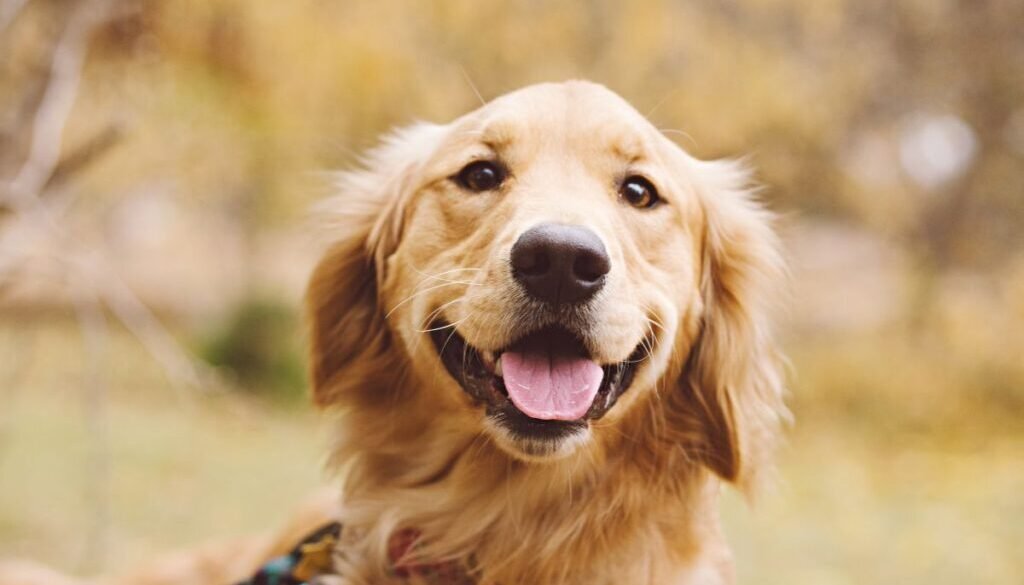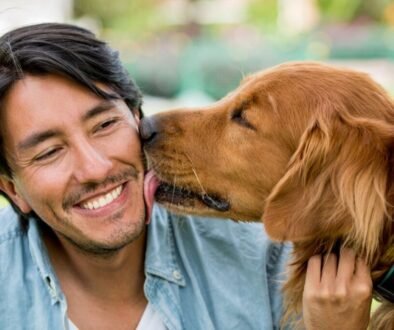Why Do Golden Retrievers Smile? Unraveling the Mystery Behind Their Happy Faces
Golden retrievers are undeniably one of the most lovable dog breeds. But have you ever wondered why they seem to smile all the time? Is it just their facial structure, or are they genuinely happy dogs? In this blog, we’ll explore the science, psychology, and behaviors behind their heartwarming grin. By the end, you’ll not only understand why golden retrievers smile but also how you can encourage that contagious joy in your furry companion.
The Golden Retriever Smile Phenomenon
Have you ever looked at a golden retriever and thought, “Wow, they always look so happy!”?
Golden retrievers are known for their friendly demeanor, boundless energy, and, of course, their iconic “smile.” Many pet owners and dog lovers are captivated by their cheerful faces, but is their smile just a quirk of nature, or does it mean something deeper?
In this article, we’ll break down the fascinating reasons why golden retrievers seem to smile more than other breeds. From their natural anatomy to the powerful bonds they form with their owners, you’ll discover why this charming breed always lights up the room.
“Dogs do speak, but only to those who know how to listen.” — Orhan Pamuk
The Science of Smiling in Dogs
Golden retrievers aren’t the only dogs capable of “smiling,” but they’ve mastered the art. Let’s explore the science behind their signature happy expression.
Facial Anatomy of Golden Retrievers

One of the primary reasons golden retrievers appear to smile is their facial structure. Their slightly upturned lips and broad faces naturally give them a cheerful look, even when they’re at rest.
- Mouth shape: Goldens have long mouths with naturally curved corners, creating a smile-like appearance when relaxed.
- Eyes: Their warm, almond-shaped eyes often enhance their happy expression, making them look inviting and kind.
Interestingly, not all dog breeds share this feature. For example, bulldogs or pugs have different facial structures that don’t create the same impression of a smile.
Smile or Panting? Understanding Canine Expressions
Not all smiles are what they seem. Sometimes, what looks like a grin might simply be a form of panting. Dogs pant to cool down, especially after exercise or in warm weather.
How to tell the difference:
- If your dog’s tongue is hanging out and they’re breathing heavily, it’s likely panting.
- A true smile is often accompanied by a relaxed body posture, wagging tail, and calm breathing.
Fun Fact: Research has shown that dogs evolved facial expressions partly to communicate better with humans. Their “puppy dog eyes” are no accident!
The Psychology Behind the Smile
Golden retrievers are famous for their sunny dispositions, and their smiles often reflect their internal happiness. But what’s going on in their minds?
Are Golden Retrievers Actually Happy?

Yes, golden retrievers are genuinely happy dogs. This breed is known for its friendly, affectionate personality, making them one of the most popular family pets in the United States.
A few reasons why golden retrievers are naturally happy:
- They love people: Goldens thrive on human interaction and enjoy being part of the family.
- They’re highly trainable: Because they aim to please, training is often a fun and rewarding experience for them.
- They’re playful: Their boundless energy means they’re always up for a game or adventure.
The Role of Oxytocin: The Love Hormone
When golden retrievers smile, it’s not just their faces lighting up — there’s a chemical reaction happening too. Studies show that both dogs and humans release oxytocin, the “love hormone,” when they interact positively.
Did you know? Staring into your dog’s eyes can increase oxytocin levels for both you and your pet!
This mutual bond of love and trust contributes to their overall happiness, making their smiles all the more genuine.
Behavioral Traits That Make Goldens Smile More
Golden retrievers aren’t just born with a happy face — their behaviors and personality traits also play a significant role in their smiles.
Social Nature

Golden retrievers are pack animals at heart. They enjoy the company of people and other dogs, which keeps them socially fulfilled and emotionally balanced.
Signs of social happiness in goldens:
- Excited tail wagging when meeting new people
- Playful barking or nudging for attention
- Relaxed body language during group interactions
Positive Reinforcement and Bonding
Goldens are incredibly receptive to positive reinforcement, which encourages more smiling and happy behaviors. Praise, treats, and affection go a long way in keeping their spirits high.
Tips for strengthening your bond:
- Spend quality time playing fetch or going on walks.
- Use verbal affirmations like “Good boy!” to reinforce good behavior.
- Offer belly rubs and cuddles regularly.
Golden retrievers crave love and attention. A happy golden equals a smiling golden!
How to Keep Your Golden Retriever Smiling
If you’re lucky enough to share your life with a golden retriever, you’ve probably noticed how much joy they bring. But how can you ensure their happiness — and their iconic smile — every day?
Physical Exercise

Goldens are an energetic breed that requires plenty of physical activity to stay healthy and happy.
Recommended activities:
- Daily walks (at least 1 hour)
- Games like fetch, tug-of-war, or frisbee
- Swimming, which goldens love thanks to their water-resistant coats
Mental Stimulation

Keeping their minds active is just as important as physical exercise. Goldens are highly intelligent and love challenges.
Ideas for mental stimulation:
- Puzzle toys or treat-dispensing games
- Obedience training sessions
- Learning new tricks (e.g., “spin” or “high five”)
Balanced Diet

A healthy diet plays a significant role in their overall well-being. Make sure your golden retriever gets the right balance of proteins, fats, and carbohydrates.
Foods that boost happiness:
- High-quality dog food with natural ingredients
- Occasional treats like carrots, apples, or peanut butter (in moderation)
- Avoid harmful foods like chocolate, grapes, and onions
Love and Attention

Perhaps the most crucial factor in keeping your golden retriever smiling is your unconditional love. Spend time together, provide affection, and create positive experiences to strengthen your bond.
Conclusion: Smiles That Brighten Our Days
Golden retrievers don’t just smile because of their facial structure — their happiness is deeply tied to their personalities, behaviors, and interactions with the people they love. Their smiles reflect the joy they bring into our lives, reminding us to appreciate the little moments of happiness every day.
Whether you’re tossing a ball in the park, cuddling on the couch, or just enjoying their presence, your golden retriever’s smile is a sign of the special bond you share.
FAQs About Golden Retrievers and Smiling
- Do all golden retrievers smile?
Yes, most golden retrievers have the characteristic smile due to their friendly temperament and facial structure, but individual expressions may vary. - Is my golden retriever smiling because they’re happy?
Often, yes! A relaxed body, wagging tail, and soft eyes typically indicate genuine happiness. - Can other dog breeds smile like golden retrievers?
Some breeds, like Labradors and Samoyeds, are also known for their “smiling” expressions. However, golden retrievers have a unique combination of personality and facial features that make their smile stand out. - How can I tell if my golden retriever is unhappy?
Signs of unhappiness include excessive barking, whining, destructive behavior, or changes in eating habits. - What’s the best way to encourage my golden retriever to smile?
Focus on bonding activities, provide plenty of exercise, and use positive reinforcement to create a loving and stimulating environment.
Ready to see your golden retriever smile today? Grab a ball, head to the park, and enjoy the pure joy of spending time with your best friend!



